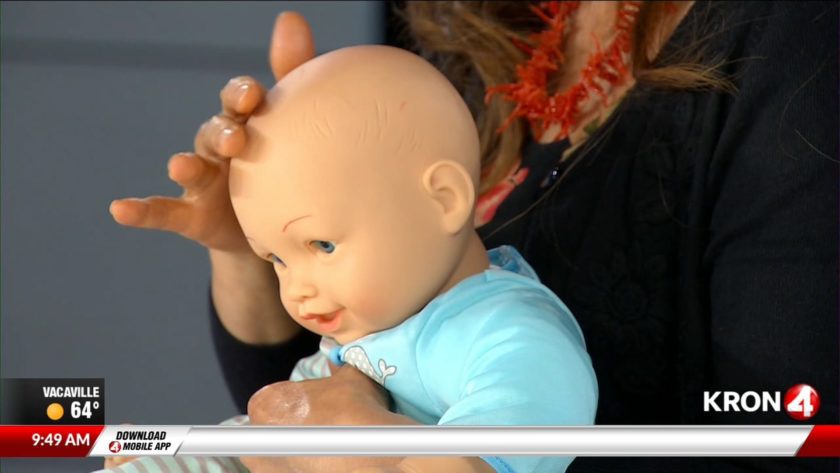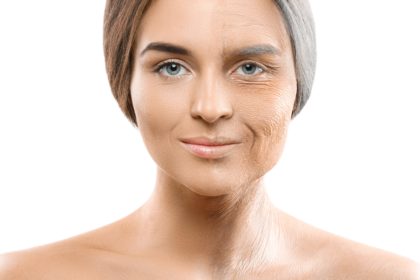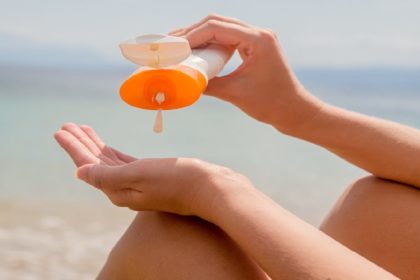Studies show that those who regularly used sunscreens were more likely to burn than those who did not. I explain why and what to do about it with KRON 4 Morning News Anchor, Marty Gonzalez.

Why Sunscreen Users Burn
Possible reasons for this finding* are that sunscreen users:
- May have a false sense of security.
- Justify staying outdoors loner.
- Don’t follow label directions properly.
*National Health Interview Survey of 31,000 Americans recently published in JAMA Dermatology.
Commonly Missed Spots
The most commonly overlooked areas when it comes to applying sunscreen are the most vulnerable to skin cancer. These body parts are exposed to the sun almost daily and not covered up during the colder months.

- Scalp: Use an oil-free sunscreen (least greasy option for hair) if you’re bald, shave your head, and on your part.
- Ears: Cancer occurs frequently on the ears.
- Eyelids: Cancers often develop on the skin around the eyes. Difficult to protect with sunscreen if you don’t want lotion in your eyes. Wear wrap-around sunglasses with UV-blocking lenses.
- Lips: One of the highest risk areas for squamous cell cancer. When they develop on the lips, there is the highest chance of spreading and 35% chance of recurrence. RISK OF DEATH could be as high as 15%.
- Hands: If you wash your hands after applying sunscreen, the backs of your hands end up with zero sun protection. Must reapply sunscreen onto backs of your hands after washing them (that includes after using the restroom too). Remember… when driving, the backs of your hands, arms, and face are highly exposed to UVA aging rays. Glass filters out only one kind of radiation — UVB rays.

- Back of the neck: This is a high-risk zone for basal and squamous cell cancer. Even if your have long hair, it needs sunscreen.
- Back: According to the American Cancer Society, men are particularly at high risk of developing deadly melanoma on their backs. The back is a difficult area to apply sunscreen and often leads to severe sunburns.

ALERT! If you’ve had five or more blistering sunburns, your risk of melanoma is increased by 80% and your risk of non-melanoma skin cancer is increased by 68%.
- Feet: If wearing sandals or have bare feet, your skin can burn easily. Apply sunscreen to tops of the feet.
Date and Shake Your Sunscreen
- Mark the date that you opened the sunscreen with a waterproof marker if there is no expiration date. Sunscreens are meant to maintain their original potency for 3 years.
- Shake it (even if the directions don’t say to) to distribute the active ingredients throughout the product.
Use Enough Sunscreen

- Face – 1 teaspoon
- Body – 1 ounce (a shot glass full) — about 1 tsp. per body part

- Apply 15 to 30 minutes BEFORE going outside.
- Reapply every 2 hours OR immediately after swimming, sweating, or washing your hands. So remember to reapply to your hands after you use the restroom!
Is SPF 15 Twice as Protective as SPF 30?
SPF (Sun Protection Factor) is a measure of how well as sunscreen will protect from the burning UVB rays only — not the aging UVA rays. Both can cause skin cancer. The SPF scale is not linear:
- SPF 15 blocks 93% UVB rays.
- SPF 30 blocks 97% UVB rays.
- SPF 50 blocks 98% UVB rays.
- SPF 100 blocks 99% UVB rays.
The ABCs of Sunscreens – Lotion vs. Spray; Chemical vs Mineral
- Chemical sunscreens (contain ingredients, such as octinoxate and oxybenzone)
- Look for Broad Spectrum (UVA/UVB protection)
- UVA rays prematurely age the skin (wrinkling, age spots). UVB rays burn the skin. Both cause cancer.
- There is NO such thing as “waterproof” sunscreen or “sunblock”.
- Mineral sunscreens are physical blocks (contain zinc oxide and titanium oxide):
- Hawaii just signed a bill to ban chemical sunscreens (contain oxybenzone and octinoxate) because they are deemed potentially harmful to aquatic life.
- Studies found these chemicals cause coral bleaching in coral reefs around the world.
- In the past 6 years, none of the tested mineral sunscreens offered superior UVA/UVB protection or met their labeled SPF.
- Sprays
- Don’t use sprays on children.
- Don’t spray directly on your face. Spray on hands first, then apply to the face.
- Sprays are FLAMMABLE! Avoid open flames or any material that can throw sparks even if your skin feels dry.
- Lip balms
- Must be SPF 30 or higher and reapply every 2 hours.
- Apply on both upper AND lower lip. You’re 12 times more likely to develop cancer on the LOWER LIP than on the upper lip.

NOTE: Consumers Reports recently rated Equate (a Walgreen’s brand) Sport Lotion, Trader Joe’s Spray Sunscreen SPF 50+, and Aquaphor Lip Protectant + Sunscreen SPF 30 as providing the best UVA and UVB protection.
![]() Fit Tip: Wear Sunscreen Even on Cloudy Days
Fit Tip: Wear Sunscreen Even on Cloudy Days
- UVB rays are more prevalent in the summer and between 10:00 am and 4:00 pm.
- UVA rays are still prevalent regardless of the season or weather however, and can pass through glass, light clouds, can reflect off water, sand, concrete, and snow, and can reach below the water’s surface.
- So even though you MAY NOT BURN, you are being exposed to the UVA rays that are less intense but cause aging skin and skin cancer.





